M2L1: Attention and Perceptual Processes
1/34
Earn XP
Description and Tags
NIOS Senior Secondary 12th Standard Module 2 Basic Psychological Processes Lesson 1 Chapter 6
Name | Mastery | Learn | Test | Matching | Spaced |
|---|
No study sessions yet.
35 Terms
attention
the process of narrowing down stimuli that requires our processing
perception isn’t possible without attention
organises perception and other cognitive functions
alerting function (4 components of attention)
(4 components of attention)
complete physiological and mental preparedness
(eg. waiting for instructions)
selective function (4 components of attention)
(4 components of attention)
selecting an object of attention as it is impossible to pay attention to multiple things at once
automatic processing - two or more activities are performed simultaneously but one is automatic and doesn’t require much attention (eg. driving a car and talking on the phone)
limited capacity channel (4 components of attention)
(4 components of attention)
the selected number of articles of stimuli that one pays attention to
(eg. a friend’s voice in a crowd of voices)
vigilance (4 components of attention)
(4 components of attention)
or sustained attention, is paying attention to one task continuously for a long time
(eg. looking at the screen at Air Traffic Control)
selective attention (classification of attention)
(classification of attention)
being able to focus on the task and ignoring distractions
sustained attention (classification of attention)
(classification of attention)
giving attention to one task at a time
external / outer / physical factors (factors affecting selective attention)
(factors affecting selective attention)
movement
intensity
novelty
size
change
repetition
clarity
colours
contrast
internal / psychological factors (factors affecting selective attention)
(factors affecting selective attention)
need
interest
emotional state
transduction (understanding the role of sensation in perception)
(understanding the role of sensation in perception)
transforming sensation into perception
perception (understanding the role of sensation in perception)
(understanding the role of sensation in perception)
organisation, interpretation, analysis and integration of stimuli carried out by sense organs and brain
form perception (understanding the role of sensation in perception)
(understanding the role of sensation in perception)
the process of organising
laws of perceptual organisation (understanding the role of sensation in perception)
(understanding the role of sensation in perception)
also known as gestalt laws of organisation
early 1990s - German psychologists, particularly Kohler, Koffka, and Wertheimer
good figure or pragnanz laws → tendency to perceive in an organised form
figure-ground segregations
principles of perceptual organisation (understanding the role of sensation in perception)
(understanding the role of sensation in perception)
proximity
similarity
continuity
symmetry
closure
depth perception (understanding the role of sensation in perception)
(understanding the role of sensation in perception)
distance → measurement of length between observer and object
depth → measurement of length between two objects perceived by an observer
monocular / psychological cues (depth perception)
(depth perception)
relative size
interposition / overlapping
linear perspective
aerial perspective
light and shade
relative height
texture gradient
motion parallax
relative size (monocular cues )
(monocular cues )
we can easily perceive the size of a common object due to seeing it often as it is a familiar object and the bigger it is the closer it is and vice versa
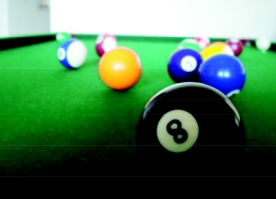
interposition / overlapping (monocular cues )
(monocular cues )
when one object blocks another object, the blocked object seems farther away
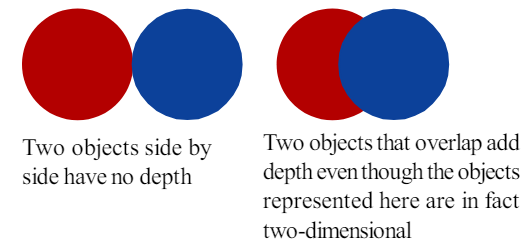
linear perspective (monocular cues )
(monocular cues )
when parallel lines go off into the distance, they seem to converge at a point because farther things seem closer
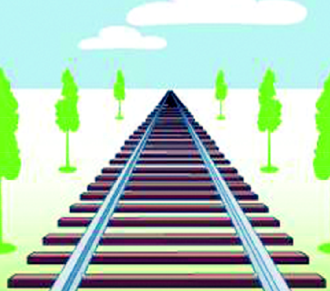
aerial perspective (monocular cues )
(monocular cues )
when objects in landscape are clearer they are closer to the observer but when they are hazy they are closer to the horizon (farther from observer)

light and shade (monocular cues )
(monocular cues )
using the source of light to assess the object’s shadow’s length and distance from the object
relative height (monocular cues )
(monocular cues )
smaller objects seem farther away while bigger objects seem closer
texture gradient (monocular cues )
(monocular cues )
when a feature of the landscape is closer (like grass in a meadow) you can see it in detail - rough texture (individual blades of grass), when it is farther you can only see finer texture (a green haze)
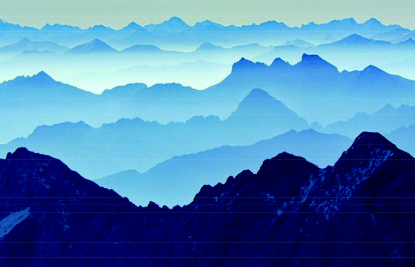
motion parallax (monocular cues )
(monocular cues )
(kinetic monocular cue) occurs when objects at different distances move at different relevant speed - the distant objects seem to move slower than closer objects
rate of an object’s movement provides a cue to its distance
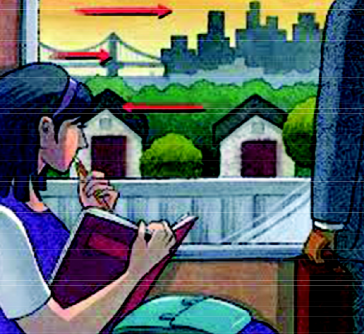
binocular / physiological cues (depth perception)
(depth perception)
retinal or binocular disparity
convergence
accomodation
retinal or binocular disparity (binocular cues)
(binocular cues)
objects that are nearer or farther than the fixation point which indicates the distance of the object from the fixation point
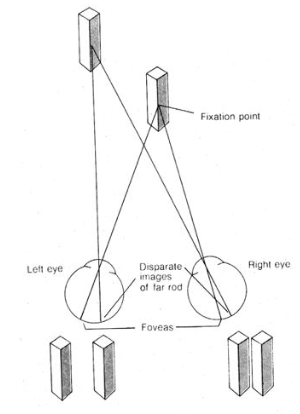
convergence (binocular cues)
(binocular cues)
when the vision of both eyes are parallel the object is farther while the angle indicates the closeness of the object

accomodation (binocular cues)
(binocular cues)
when the retina is focusing on an image and the convexity of ciliary muscles change, allowing us to decipher approximate distance
if the convexity is more, the object is closer and vice versa
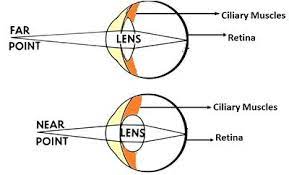
perceptual constancy
size constancy
shape constancy
brightness constancy
muller-lyer illusion (illusions)
(illusions)
line a is perceived as longer than line b even though both lines are equal
experienced even by children and some studies suggest animals

illusion of vertical and horizontal lines (illusions)
(illusions)
vertical lines are perceived as longer than horizontal lines even when both are equal
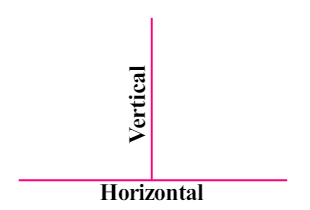
ponzo illusion (illusions)
(illusions)
geometrical-optical illusion demonstrated by Italian psychologist Mario Ponzo in 1911
when there are two identical lines across a pair of converging lines (like train tracks), the upper line looks longer as the converging lines make it look farther
since it is perceived to be farther, the assumption is that it must be longer to appear the same length and the lower line
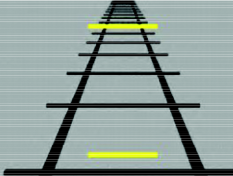
zollner illusion (illusions)
(illusions)
created by German astrophysicist Johann Karl Friedrich Zollner (1834-18882)
first published in journal Annalen der Physikin 1860
an illusion where a central aspect of a simple line image (such as length, straightness, parallelism, etc) appears distorted due to the other aspects of the image (such as background-foreground lines, other intersecting shapes, etc)

poggendorff illusion (illusions)
(illusions)
German physicist Johann Poggendorff (1796-1877) first described it in 1860
the lines appear to be misaligned due to the intersecting line
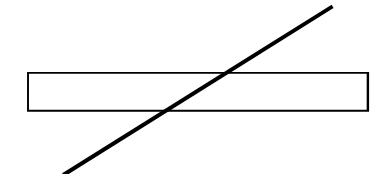
apparent movement illusion (illusions)
(illusions)
also known as phi phenomenon - when motionless pictures are projected one after another at a certain rate
eg. moving pictures in a cinema, flickering lights, etc
Max Wertheimer said that there needed to be an appropriate level of brightness, size, spatial gap, and temporal contiguity of different lights